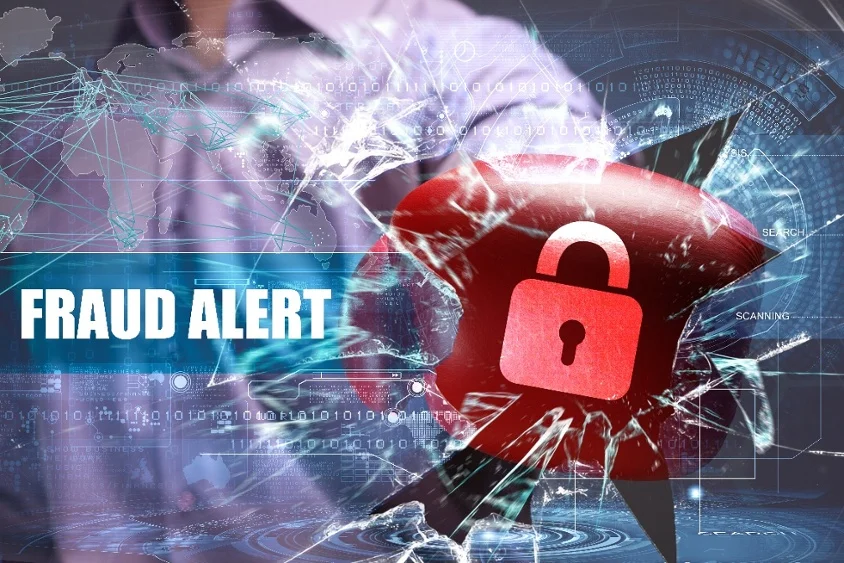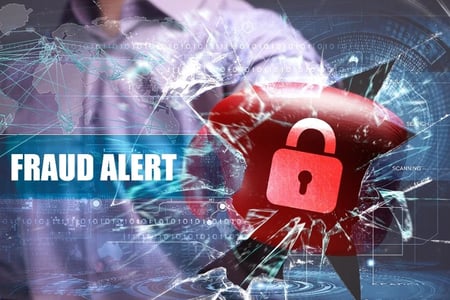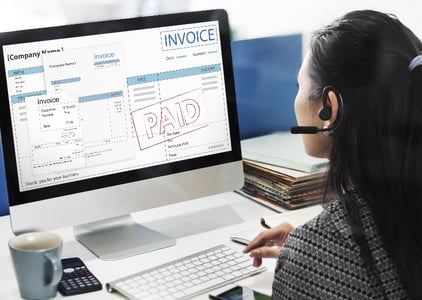
Safeguarding Your Business: Preventing B2B Payment Fraud
Learn how to protect your business from B2B payment fraud with these essential strategies and best practices.
Understanding the Threat: What is B2B Payment Fraud?
B2B payment fraud refers to fraudulent activities that occur in the business-to-business payment process. It involves the manipulation, deception, or unauthorized access to payment transactions between two businesses. The goal of B2B payment fraud is to illegally obtain funds or goods from the targeted business, causing financial losses and reputational damage.
There are several common methods used in B2B payment fraud, and understanding them is crucial to effectively prevent and mitigate such risks.
Common Methods Used in B2B Payment Fraud
 1. Invoice Manipulation: In this method, fraudsters alter the details of an invoice, such as the payment amount or beneficiary information, to redirect funds to their own accounts. They may use tactics like creating fake invoices or modifying legitimate ones.
1. Invoice Manipulation: In this method, fraudsters alter the details of an invoice, such as the payment amount or beneficiary information, to redirect funds to their own accounts. They may use tactics like creating fake invoices or modifying legitimate ones.
2. Business Email Compromise (BEC): BEC scams involve impersonating a trusted business contact, such as a vendor or a CEO, through email communication. Fraudsters trick employees into making unauthorized payments or sharing sensitive information, leading to financial losses.
3. Payment Diversion: This method involves intercepting legitimate payments intended for a business and redirecting them to fraudulent accounts. Fraudsters may gain access to payment channels or compromise vendor communications to carry out this type of fraud.
4. Phishing and Spoofing: Fraudsters send deceptive emails or create fake websites that mimic legitimate businesses, tricking employees into revealing sensitive information like login credentials or financial data. This information is then used to carry out fraudulent transactions.
5. Account Takeover: In an account takeover, fraudsters gain unauthorized access to a legitimate business's account or system. They exploit this access to initiate fraudulent payments or manipulate payment instructions.
By being aware of these common methods, businesses can enhance their ability to detect and prevent B2B payment fraud.
Identifying Vulnerabilities in Your Payment Processes
To effectively prevent B2B payment fraud, it is essential to identify vulnerabilities in your payment processes. Here are some key areas to assess:
![]() Invoice Verification: Ensure that proper invoice verification processes are in place to detect any discrepancies or irregularities. Implement mechanisms to verify the authenticity of invoices, such as cross-referencing them with purchase orders and contract terms.
Invoice Verification: Ensure that proper invoice verification processes are in place to detect any discrepancies or irregularities. Implement mechanisms to verify the authenticity of invoices, such as cross-referencing them with purchase orders and contract terms.
![]() Vendor Due Diligence: Conduct thorough due diligence on vendors and partners before establishing business relationships. Verify their credentials, reputation, and financial stability to minimize the risk of engaging with fraudulent entities.
Vendor Due Diligence: Conduct thorough due diligence on vendors and partners before establishing business relationships. Verify their credentials, reputation, and financial stability to minimize the risk of engaging with fraudulent entities.
![]() Payment Authorization: Implement strong authorization controls for payment transactions, such as multi-factor authentication and segregation of duties. This helps prevent unauthorized individuals from initiating or approving payments.
Payment Authorization: Implement strong authorization controls for payment transactions, such as multi-factor authentication and segregation of duties. This helps prevent unauthorized individuals from initiating or approving payments.
![]() Employee Training and Awareness: Educate employees about the risks associated with B2B payment fraud and provide training on how to identify and report suspicious activities. Encourage a culture of vigilance and emphasize the importance of following established payment protocols.
Employee Training and Awareness: Educate employees about the risks associated with B2B payment fraud and provide training on how to identify and report suspicious activities. Encourage a culture of vigilance and emphasize the importance of following established payment protocols.
By identifying vulnerabilities in your payment processes, you can proactively implement measures to mitigate the risk of B2B payment fraud.
Implementing Best Practices for B2B Payment Fraud Prevention
To effectively prevent B2B payment fraud, businesses should adopt the following best practices:
![]() Regularly update and patch payment systems and software to protect against known vulnerabilities.
Regularly update and patch payment systems and software to protect against known vulnerabilities.
![]() Implement strong password policies and encourage the use of complex, unique passwords.
Implement strong password policies and encourage the use of complex, unique passwords.
![]() Use secure payment channels and encryption technologies to safeguard sensitive payment data in transit.
Use secure payment channels and encryption technologies to safeguard sensitive payment data in transit.
![]() Regularly monitor and reconcile financial transactions to detect any suspicious activity or discrepancies.
Regularly monitor and reconcile financial transactions to detect any suspicious activity or discrepancies.
![]() Conduct periodic audits and assessments of payment processes to identify potential weaknesses and areas for improvement.
Conduct periodic audits and assessments of payment processes to identify potential weaknesses and areas for improvement.
![]() Establish strong internal controls, such as segregation of duties, to prevent unauthorized access or manipulation of payment processes. e.g. Don't update the supplier bank details based on the information provided on the invoice, always obtain a separate written letter of authority from the vendor to make any changes to your ERP master data.
Establish strong internal controls, such as segregation of duties, to prevent unauthorized access or manipulation of payment processes. e.g. Don't update the supplier bank details based on the information provided on the invoice, always obtain a separate written letter of authority from the vendor to make any changes to your ERP master data.
By implementing these best practices, businesses can significantly enhance their ability to prevent B2B payment fraud.
For more information on best practice recommendations listen now to our podcast on Accounts Payable Supplier Communications
The Role of Invoice Automation in Strengthening Payment Security
Invoice automation plays a crucial role in strengthening payment security and preventing B2B payment fraud. By automating invoice processing, businesses can minimize manual intervention and human errors that could be exploited by fraudsters. Here are some benefits of invoice automation:
![]() Enhanced Accuracy: Automated systems can accurately capture and validate invoice data, reducing the risk of errors or discrepancies that could be exploited in fraudulent activities.
Enhanced Accuracy: Automated systems can accurately capture and validate invoice data, reducing the risk of errors or discrepancies that could be exploited in fraudulent activities.
![]() Improved Efficiency: Invoice automation streamlines the entire payment process, from invoice receipt to approval and payment. This reduces processing time and minimizes the chances of delays or fraudulent activities.
Improved Efficiency: Invoice automation streamlines the entire payment process, from invoice receipt to approval and payment. This reduces processing time and minimizes the chances of delays or fraudulent activities.
![]() Increased Transparency: Automated systems provide real-time visibility into the payment process, allowing businesses to track and monitor transactions more effectively. This transparency helps identify any suspicious activities or unauthorized changes in payment instructions.
Increased Transparency: Automated systems provide real-time visibility into the payment process, allowing businesses to track and monitor transactions more effectively. This transparency helps identify any suspicious activities or unauthorized changes in payment instructions.
![]() Robust Audit Trails: Invoice automation systems maintain detailed audit trails of all payment activities, including invoice receipt, approvals, and payments. These audit trails serve as crucial evidence in case of any fraudulent activities or disputes.
Robust Audit Trails: Invoice automation systems maintain detailed audit trails of all payment activities, including invoice receipt, approvals, and payments. These audit trails serve as crucial evidence in case of any fraudulent activities or disputes.
By leveraging invoice automation, businesses can strengthen payment security, streamline processes, and reduce the risk of B2B payment fraud.
Need more information on Invoice Automation download our Mi Invoices 
In our upcoming blog, we will discuss the importance of Purchase Orders (POs) and a process called PO Flip.
PO Flip means using the PO number mentioned on the invoice to extract the data from your ERP system instead of using the details on the invoice.
While this process can potentially reduce manual intervention, it can also increase risks if the data captured from the invoice is not validated against the data stored in your ERP system. For instance, it's crucial to ensure that the supplier details mentioned on the invoice match the data held in your ERP. While this may seem like an obvious check to perform, we've come across many leading solutions that don't complete these checks. This not only opens up the possibility of payment fraud but can also impact tax reporting.
Subscribe to receive our next Blog and Invoicing Insights


.webp?width=525&height=300&name=Purchase%20to%20Pay%20Best%20Practices%20(1).webp)




